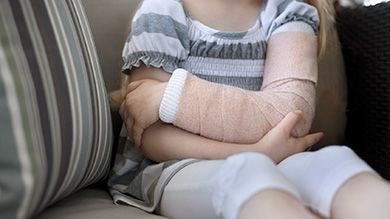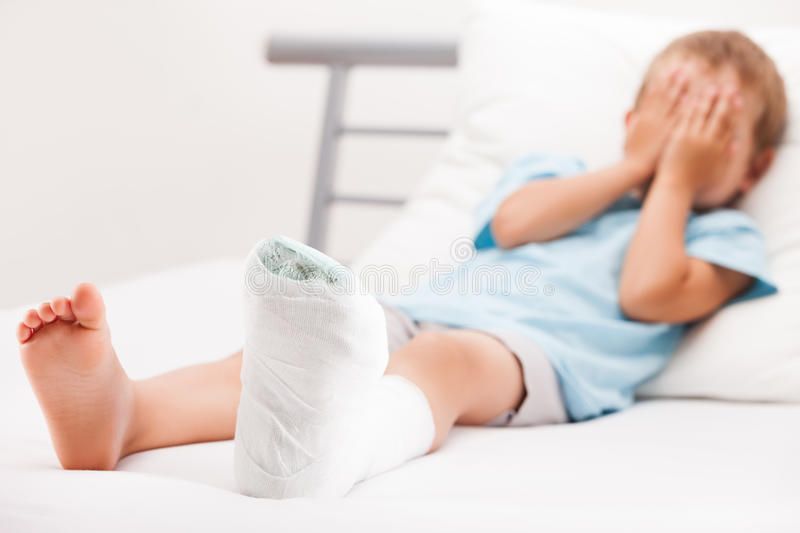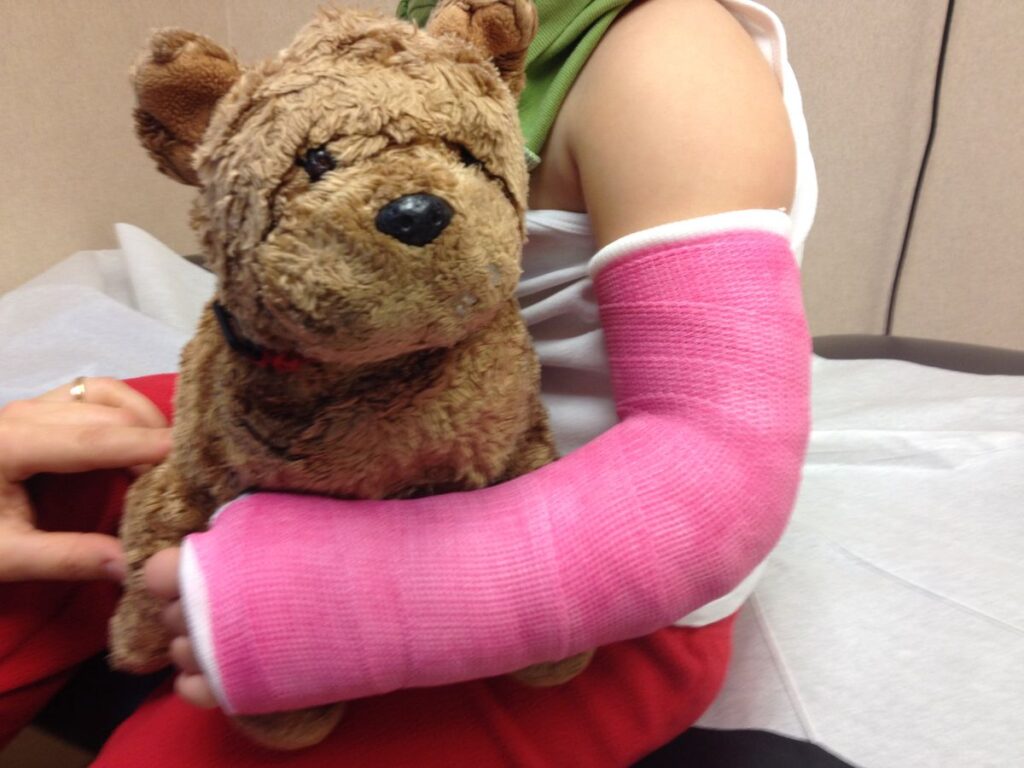- Pain
- Swelling
- Obvious deformity of the bone
- Trouble in using or moving the bone in a normal way
- Warmth, bruising, or redness
- X-rays. This test prepares images of internal tissues, bones, and organs.
- MRI. This test generates detailed images of organs and structures within the body using a combination of massive magnets, radio waves, and a computer.
- CT scan. This test makes use of X-rays and a computer to make detailed images of the body. A CT reveals particulars of the bones primarily, the muscles, associated fat, and other organs. The test is more detailed as compared to general X-rays.
- Splint or cast. This keeps the broken bone in place at the time of healing.
- Medicine. Specific medicines can aid in easing pain.
- Traction. The muscles and tendons around the damaged bone are gently stretched to allow the bone ends to align and mend. It utilizes pulleys, strings, weights, and a metal frame connected over or on the bed.
- Surgery. Your child may require surgery to put specific types of broken bones back into place. At times the surgeon puts metal rods or pins inside the bone or outside the body to hold the bone pieces in place. This aids them to heal in the correct position.
Important points about a fracture in a child
Suggestions to help you get the most from a visit to your child’s healthcare provider:
Reason behind the visit
Pen down questions
New diagnosis / medications / treatments / tests.
Realize why?
Question alternatives
Test or procedures
Follow-up date
Contact protocol
Success Stories
Kids are naturally energetic, active, and curious, which translates to bruises, bumps, and the occasional worse thing like fractures. Any parent gets a suspected break is sure to be a worrisome experience. While children’s bones are stronger than adults’ because they are more flexible, they are also not finished developing yet, leaving them at risk…
Read MoreChildhood is a period of development, activity, and growth. Bones extend and reform as children become taller and stronger. A critical aspect of this process is the growth plate, a soft spot of developing cartilage located in the ends of long bones. Though these plates are crucial to the development of healthy bones, they’re also…
Read MoreIn the children’s world of adventure, tumbles, falls, and small accidents are a daily occurrence. Oftentimes, these incidents amount to nothing more than bruises and scrapes. But occasionally, they cause something more serious—fractures. Although broken bones may be frightening, more worrying is when such injuries are not treated promptly by someone who has special training…
Read More

